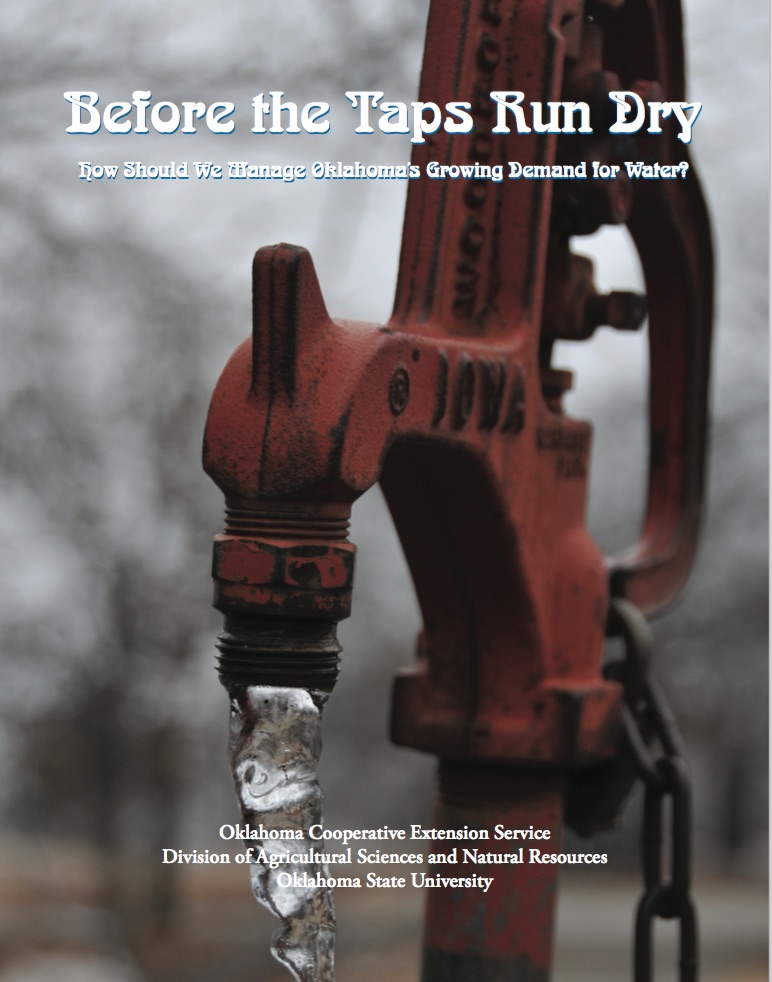Three Issue Guides about Water Use in Kansas, Oklahoma, and California
Blog Category:
In recent years, several organizations have framed and produced issue guides about water scarcity in the western part of the United States. Here, for download, are three issue guides that have been shared by these organizations.
Keep the Tap Flowing: How Should Kansans Manage a Declining Water Resource?
This 2014, 20-page issue guide from the Kansas State University Agricultural Experiment Station and Cooperative Extension Service presents four approaches for deliberation:
Approach 1: Independently Manage Water
Allow Kansans to continue water usage according to their water rights, leaving conservation efforts to the individual. This prevents short-term economic consequences in the region, while providing individuals with the freedom to identify personal conservation goals.
Approach 2: Create Localized Partnerships to Enhance Conservation
Promote the development of local conservation plans, enabling communities to cooperatively design their own water management efforts. This approach enables stakeholders to set and achieve conservation goals, while allowing for input from all who are affected.
Approach 3: Allow the State Government to Regulate Water Usage and Conservation
Allow the Kansas state government to regulate conservation when conditions warrant it, or when citizens request it. This approach can establish responsible regulations that are fair to those involved, while preserving the water supply for the common good of present and future Kansans.
Approach 4: Treat Water Rights as a Free-Market Good
Use a free-market system that permits water entitlements to be bought and sold, and that requires a portion of the amount exchanged to be conserved. This approach lets the market dictate the price, enables water rights holders to voluntarily transfer entitlements, and allows water to be used where it is needed most while cutting back on overall use.
Before the Taps Run Dry: How Should We Manage Oklahoma's Growing Demand for Water?
This 20-page issue guide, from the Oklahoma Cooperative Extension Service, Division of Agricultural Sciences and Natural Resources, Oklahoma State University, presents three approaches for deliberation:
Approach 1: Allow Water to be Bought and Sold in a Free Market Like Any Commodity.
The common problem is Oklahoma is not capitalizing on water as a valuable economic resource. We need to treat water as a free market commodity and let demand dictate the price.
Approach 2: Use Conservation to Balance Water Demands with Supply.
The common problem is Oklahomans don't do enough to protect this precious resource while it is still available in quantities that meet our needs. We need to take a more aggressive approach to conserving water.
Approach 3: Allow Government--with Public Guidance-- to Treat Water as a "Common Good."
The common problem is that Oklahomans must recognize that water be made available to everyone. We need to allow state government along with public input to determine how our water supply can be used to benefit all Oklahomans.
Uncertain Waters: Navigating California's Water Priorities
This 16-page issue guide, was produced with coordination by the California National Issues Forums Network with the primary research and writing by Craig Paterson, and in collaboration with the National Issues Forums (NIF), the California Center for the Book, the California State Library, and the Water Education Foundation. The guide presents three approaches for deliberation:
Approach 1: Just Add Water
The central problem is that California's water infrastructure doesn't store or carry enough water to meet our needs. We need to expand our water storage capacity, and to fix the Delta as an essential ecosystem and water supply hub.
Approach 2: Good to the Last Drop
The central problem is that Californians routinely waste much of the water we could be using to meet our needs. We need to create a culture of wise water use and reuse, and a goal of decentralized, local water self-sufficiency.
Approach 3: You Can't Fool Mother Nature
The central problem is that California's water management system is too uncoordinated, too slow to respond and too biased by special interests, and politics to meet our needs. We need an unbiased water management system where decisions are based on science rather than politics.
To view or download these three issue guides, click on the titles above or here:
Keep the Tap Flowing: How Should Kansans Manage a Declining Water Resource?
Before the Taps Run Dry: How Should We Manage Oklahoma's Growing Demand for Water?
Uncertain Waters: Navigating California's Water Priorities

